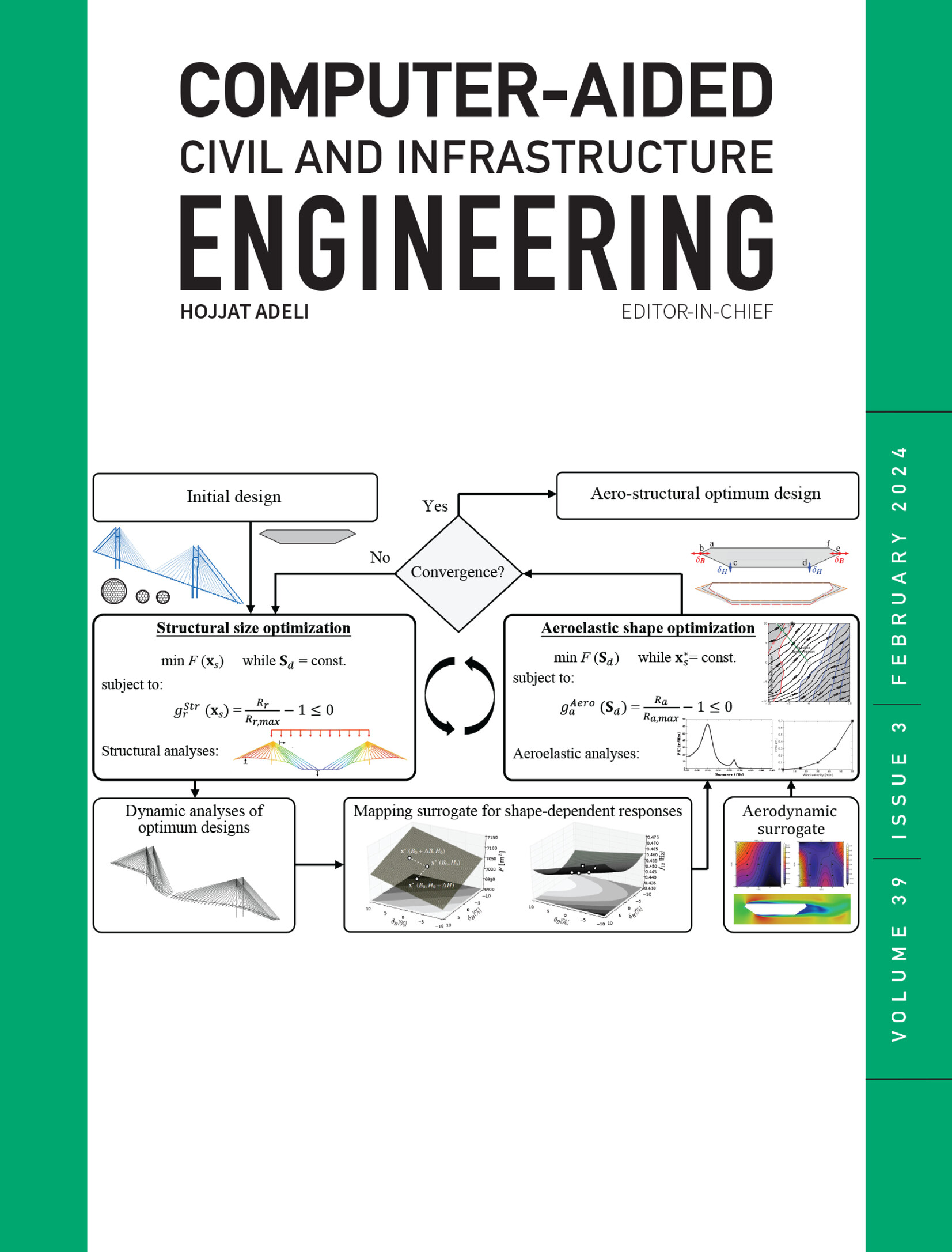Advanced low-light image transformation for accurate nighttime pavement distress detection
IF 9.1
1区 工程技术
Q1 COMPUTER SCIENCE, INTERDISCIPLINARY APPLICATIONS
引用次数: 0
Abstract
Pavement distress detection is critical for road safety and infrastructure longevity. Although nighttime inspections offer advantages such as reduced traffic and enhanced operational efficiency, challenges like low visibility and noise hinder their effectiveness. This paper presents IllumiShiftNet, a novel model that transforms low-light images into high-quality, daylight-like representations for pavement distress detection. By employing unpaired image translation techniques, aligned nighttime–daytime datasets are generated for supervised training. The model integrates a lightEnhance generator, multiscale feature discriminators, and distress-focused loss function, ensuring accurate reconstruction of critical pavement details. Experimental results show that IllumiShiftNet achieves a state-of-the-art peak signal-to-noise ratio of 28.5 and a structural similarity index measure of 0.78, enabling detection algorithms trained on daytime data to perform effectively on nighttime imagery. The model demonstrates robust performance across varying illuminance levels, adverse weather conditions, and diverse road types while maintaining real-time processing capabilities. These results establish IllumiShiftNet as a practical solution for nighttime pavement monitoring.先进的低光图像变换,用于准确的夜间路面破损检测
路面破损检测对于道路安全和基础设施的使用寿命至关重要。尽管夜间检查具有减少交通和提高操作效率等优势,但低能见度和噪音等挑战阻碍了其有效性。本文介绍了一种新颖的模型IllumiShiftNet,它可以将低光图像转换为高质量的、类似日光的路面破损检测表示。通过采用非配对图像翻译技术,生成对齐的昼夜数据集用于监督训练。该模型集成了lightenance生成器、多尺度特征鉴别器和聚焦于遇险的损失函数,确保了关键路面细节的准确重建。实验结果表明,IllumiShiftNet的峰值信噪比为28.5,结构相似性指数为0.78,使得白天数据训练的检测算法能够有效地应用于夜间图像。该模型在保持实时处理能力的同时,在不同的照度水平、恶劣的天气条件和不同的道路类型中表现出强大的性能。这些结果使IllumiShiftNet成为夜间路面监测的实用解决方案。
本文章由计算机程序翻译,如有差异,请以英文原文为准。
求助全文
约1分钟内获得全文
求助全文
来源期刊
CiteScore
17.60
自引率
19.80%
发文量
146
审稿时长
1 months
期刊介绍:
Computer-Aided Civil and Infrastructure Engineering stands as a scholarly, peer-reviewed archival journal, serving as a vital link between advancements in computer technology and civil and infrastructure engineering. The journal serves as a distinctive platform for the publication of original articles, spotlighting novel computational techniques and inventive applications of computers. Specifically, it concentrates on recent progress in computer and information technologies, fostering the development and application of emerging computing paradigms.
Encompassing a broad scope, the journal addresses bridge, construction, environmental, highway, geotechnical, structural, transportation, and water resources engineering. It extends its reach to the management of infrastructure systems, covering domains such as highways, bridges, pavements, airports, and utilities. The journal delves into areas like artificial intelligence, cognitive modeling, concurrent engineering, database management, distributed computing, evolutionary computing, fuzzy logic, genetic algorithms, geometric modeling, internet-based technologies, knowledge discovery and engineering, machine learning, mobile computing, multimedia technologies, networking, neural network computing, optimization and search, parallel processing, robotics, smart structures, software engineering, virtual reality, and visualization techniques.

 求助内容:
求助内容: 应助结果提醒方式:
应助结果提醒方式:


